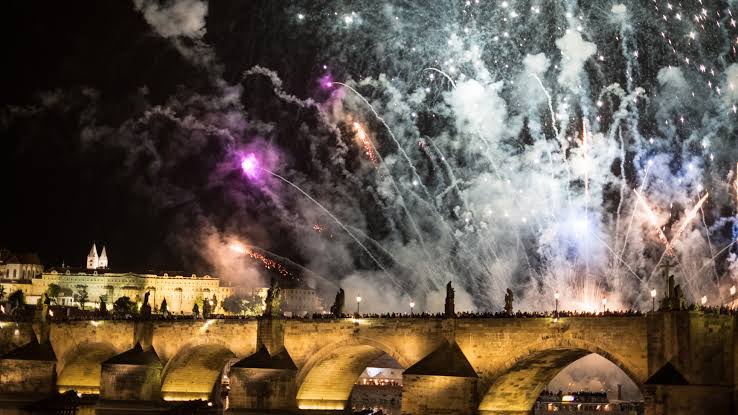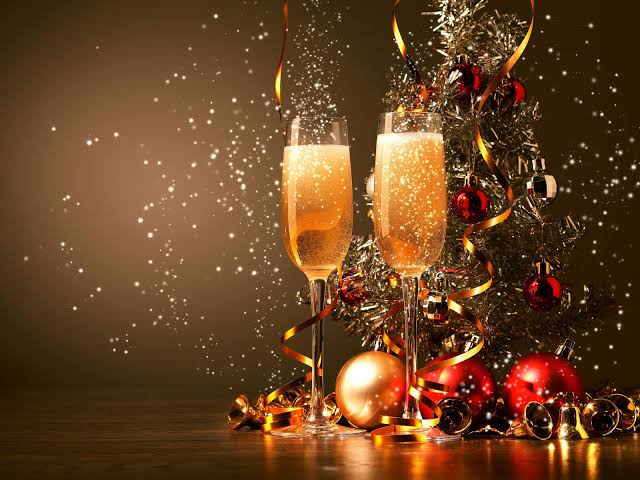New Year pictures
11 min readBy making way, New Year pictures fall into woodblocks, engraved papers, and paper paintings. Woodblocks are patterns engraved and colored on a block, with thecraftsmanship covering drawing rough sketch, outlining, engraving the block, platemaking, printing, color painting and framing Engraved papers are patterns engraved on the paper, good for presenting the meticulous and vivid pictures. Paper drawings are ash flapping gray pictures. People used willow coal to draw the sketch on the paper, and used the sketch to make several copies, which is called”flapping gray Then, there would be coloring tracing the outline with black brush, whitewashing the face, rinsing the hands, drawing eyes and eyebrows, delineating, tracing the design ingold, coating with oil, etc. This form of art originated from 1465-1487, characterized with uncomplicatedness and simplicity and enjoying strong influence the famousUkiyo-e is exactly a result of taking in the essence of flapping gray picturesLike the New Year scrolls, New Year pictures are derived from the door-god. As recorded in the arbitrary(Du Duan) of an Eastern Han scholar Cai Yong(132-192), some folks put up the pictures of gods Shentu and Yulei in charging of supervising all the ghosts on the door. It is said that Empire Li shimin(599-649) was sick and could not fall asleep when hearing the ghosts crying outside the door. the generals QinShubao and Yuchi Gong volunteered to safeguard the empire, standing on both sides of the palace door, one holding sword and the other holding whip That night, the empire turned out to be safe and sound.

Then the empire ordered people to draw the imposing images of the two generals and put up on the palace door. Thereafter, they were called the door-gods. From then on, the custom of putting up door-gods became a fashion in the folk. the white-face phoenix-eye Qin Shubao, holding mace and the back-face ring-eyeball Yuchi Gong, holding whip and stroking the beard, were imperatorial without being rage
Appearing in the Song Dynasty, woodblock printing technology provided the continuous development of the New Year pictures And their content an oting the production of woodblock New Year prints with technical conditions prom functionality had been continuously enriched from the expelling the evil spirit to the hope for good luck, wishes for longevity and having many children, expressing the good wishes for the new year and decorating the house meanwhile the content extended to real life of famers and folklore and stories, enriching the cultural life and spreading knowledge. The existing earliest New Year picture in China is the Picture of Four Beauties of Southern Song Dynasty. The four beauties are Wang Zhaojun, Banji, LvZhu Zhao feiyan
Artists in Ming and Qing dynasties were keen on creating New Year pictures. New Year pictures ushered in a mature phase themes further enriched such as the festivalcategory, exorcism class, custom and scenery, door painting, story and drama, spring out-going of ladies, flowers, birds, insects and fish, etc. In late Ming and early Qing dynasties, New Year pictures had become a genre of painting. After the flourishingage of Qianlong and Jiaqing empires(1742-1820), the regional schools and sales and production places appeared. Zhuxian Town of Henan, Yangliuqing Town of Tianjin, Yangjiabu Port of Weifang, Shandong, and Taohuawu Avenue of Suzhou were the four famous production places of Chinese woodblock New Year prints New year woodblock print in Zhuxian town Kaifeng henan is the longest-standing. In Northern Song Dynasty, during festivals, especially the Spring Festival, every family would put up the door-gods to pray for longevity and harvest, good luck, wealth and fortune, as well as expelling the evil. After the demise of the northern Song Dynasty, Kaifeng woodblock New Year prints faded away. In Ming Dynasty,although this form of art in Kaifeng was revitalized once, it was gradually shifted to the south, Zhuxian Town. During Ming and Qing dynasties, number of woodblock workshops in Zhuxian Town exceeded 300, more than 70 remained in late QingDynasty, represented by”Wang Tong, “Tian Xing De, De Sheng Chang “and Tian Yi De. New Year pictures were watermarked by hand Carving ways included intaglio and rilievi, forms of the picture black and white paintings and chromatic prints, and main themes gods and door-god (the dominant kind, like Qin Shubao and Yuchi Gong in different clothes and of different shapes). Zhuxian Town woodblock New Year prints had the five characteristics: First, the lines were rough, crudeness or fineness alternated with each other; second, the images were exaggerated, with large head and small body; third, the composition was plump and symmetrical; fourth, sharp color contrast; fifth, door-gods were solemn and dignified
Yangliuqing New Year pictures can date back to late Ming Dynasty,prevailing during the reign of the Empire Yongzheng to Empire Guangxu(1875-1908).With a wide range of themes,the typical works were reflection of life,i.e.Busy with Planting(Zhuangjia Mang),Celebrating the Lantern Festival(Qingshang Yuanxiao),Crossing the River in Autumn(Qiujiang Wandu),Auspicious New Year,and Whole Family Enjoying Happiness(Xinnian Duo Jiqing,Hejia Le anran),and Fisherwoman(Yufu)and some works were about current affairs like Girls Go to School,Civilized marriage,Rob the Pawnshop,etc.These paintings were not only of art appreciation value,but also of precious historical research value.Preliminary steps resembled that of woodblock New Year prints,including creating draft,dividing the block,engraving the block,overprinting,coloring drawing,framing,and overprinting based on the draft and engraved block.but the post-production were of distinctive local characteristics emphasizing on hand painting.The cutting way of woodblock and brushwork of painting were skillfully integrated so that the two arts could complement each other
Yangjiabu woodblock New Year prints were first created in late Ming dynasty and saw the heyday in the period of Empire Qianlong in Qing Dynasty, 400 years old. It is said that there were “hundreds of print shops, thousands of print types, and tens of thousands of prints”at that time, with the sales volume reaching as high as ten millions a year. By virtue of the huge amount of print types, large scale, and extensive presence, Yangjiabu, Yangliuqing of Tianjin and Taohuawu of Suzhou formed the a situation of tripartite confrontation. Yangjiabu New Year print was full of plot, decorative value, fun, and bright colors, both suitable for the appreciation and aesthetic taste of the famer and citizen, and easy for production

Taohuawu woodblock New Year print the major folk woodcut New year pictures n the south of Yangtze river Delta, got the name because of the origin place Taohuawu of Suzhou. Artist Tang Yin(1470-1523) built the Taohua Hut here, and this place made a name for itself since then This print originated from woodblock printing process of Song Dynasty, and evolved from the tapestry portrait, to be a folk art genre in Ming Dynasty, and flourishing in the period of Empire Yongzheng and Empire Qianlong in Qing dynasty taohuawu paints were symmetrical and plump composition bright and splendid in colors diverse in subjects i e opera, custom current affairs beauty, doll and even the kitchen god and god horse. It was thought to”artfully paint the official, farmer, worker and merchant, as well as the god of wealth and bodhisattva and “collect all affairs around the world and all news in the Attention to social change and new things were the main features of the folk paintings in late Qing Dynasty Painting workshops began printing the news and record major historical events on the printing. For example, the Faren Qiu he(legal person sues for peace), and Nizi ai guo(girls love the nation reflected the national crisis and resisting foreign aggression, Zhang Jiaxiang Assassinates Guan Wei while Boxer Uprising, Marry a Foreigner and Roads in French Concession told about foo Surrendering was on the taiping rebellion attach the Xishi Storehouse reflected thecustom of the West. Meanwhile the painting drew for praying for wealth also made in arge numbers such as the prosperous family prosperous wealth and innumerableGold in Weifang of shandong In the coastal areas like foshan and chaozhou ofGuangdong, Quanzhou and Zhangzhou of Fujian, Nanning of Guangxi, etc, people printed the “paper horse”(paper for burning to pray for good luck or wealth or health with local folk flavor for local people and overseas compatriots to dispel disaster and greet New Year during the Spring Festival
In later Qing Dynasty and early Republic of China, there emerged the”improved New Year pictures. The themes were easy to understand, combined with the simple words of unconscious influence and profound meaning they were designed to assist social education get rid of stereotypes advocate saving the nation by engaging in industry, and reflect new ideas and new life In Yangliuqing of Tianjin, Mianzhu of Sichuan, Weifang of Shandong, Wuqiang of Hebei, Fengxiang of Shaanxi and other places, popular fiction, myths and legends characters remained the themes the painting workshops constantly used. However, the emerging calendar pictures and lithographic printings, with a strong modern atmosphere and artistic feature gradually occupied this market
Calendar paintings were first produced in Shanghai in early 20th century named so for the calendar table on them. Painted with a brush pen and printed with modern printing plate in colors, the main pictures were the beauties. In addition to Calendar, there were commercial advertising. For ancient beauty, the four beauties in ancient China commonly showed up: for modern beauty, famous actors in early Republican of China. Carrying promotional items like cigarettes, batteries, department stores, insurance, kerosene, fertilizers, drugs, alcohol, etc. the paintings served as the window for the public to know about the urban life. Famous painters cover Zhou Mugian Hang Xiying, Zheng Mantuo, etc
Established in 1924, Tianjin Fuhua Printing office was the earliest institute to ntroduce the lithography equipment for production of New Year pictures Lithographs paintings, besides taking in the traditional theme, plump composition, clear colors, smooth lines, and lifelike figures of woodblock New Year prints, were easy and convenient to make It gradually occupied the woodblock New Year print market by virtue of being cheap and beautiful the workshop printed only the door-god and kitchen god, to meet the need of people to add joy to the New Year’s Day
Calendar paintings were first produced in Shanghai in early 20th century named so for the calendar table on them. Painted with a brush pen and printed with modern printing plate in colors, the main pictures were the beauties. In addition to Calendar, there were commercial advertising. For ancient beauty, the four beauties in ancient China commonly showed up: for modern beauty, famous actors in early Republican of China. Carrying promotional items like cigarettes, batteries, department stores, insurance, kerosene, fertilizers, drugs, alcohol, etc. the paintings served as the window for the public to know about the urban life. Famous painters cover Zhou Mugian Hang Xiying, Zheng Mantuo, etc

Established in 1924, Tianjin Fuhua Printing office was the earliest institute to ntroduce the lithography equipment for production of New Year pictures Lithographs paintings, besides taking in the traditional theme, plump composition, clear colors, smooth lines, and lifelike figures of woodblock New Year prints, were easy and convenient to make It gradually occupied the woodblock New Year print market by virtue of being cheap and beautiful the workshop printed only the door-god and kitchen god, to meet the need of people to add joy to the New Year’s Day
New-style New Year pictures,coming into being in the anti-Japanese war period,was named so for the different ideas woodblock or offset printing ways from the old style ones.In 1930s,in the movement of promoting new woodblock by Lu Xun,he called upon the young people to refer to the traditional folk New year pictures.the new-style picture was created in Yan’an and southeastern Shanxi during that period While following the plump picture composition,bright color style and artistic form,it added the theme of farming life and revolution topics such as the protect our home and defend Our Country and picture of Spring planting of wo zha,Cooperation between the army and the folk and reclaim Wasteland of hu yichuan etc After the publication of speech at the forum of art and literature in yan’an of chairman mao in 1942,it emerged a rush for creating new style new year pictures in border areas of Yan’an and Shaanxi-Gansu-Ningxia.In 1944,types of even only chromatic prints would top 30,such as the It’s Good to Go to School of Jiang feng and Cooperation between the army and the Folk,Victory in the Anti-Japanese War of Yan han
After 1945, with the liberation the creation of new-style new year pictures was under way in all liberated areas nationwide. In 1948 after the three campaigns, with the rapid expansion of the liberated areas this new pictures went from the countryside to the cities. In the northeast liberated area, new paintings in large quantity and of great influence, focused on the land reform movement and the defending the land by joining the army movement, so dubbed the”striking lucky New Year pictures Just in 1947, the northeast pictorial had published more than 20 kinds of New Year pictures, such as Family Fun(An Lin), War Hero, Model Worker(Zhang Ding). In liberated area in North China, people were also active in creating the New Year pictures. The north China art Club(later renamed Public Art Society), the publisher of New year pictures and art works published 600, 000 copies of 30 kinds in 1948, i.e. the Picture of Joining the Army of Hong Bo and Play of Children of Feng Zhen
In 1950s,creation of the new-style and old-style New Year picture advanced side by side, growing fast across china Creators were fine art leaders from the liberated areas and famous Chinese artists, oil painters and print artists. Based on the tradition they took in the technique of Chinese painting and watercolor painting, an addition to woodblock New Year print is still popular, but in new forms. The reform of foko expression skills. The offset printing was usually applied. Today in many places, the woodblock print also has achieved great success, with new-style woodblock New Year print made in Yangliuqing, Weixian, Zhuxian Town, Wuqiang, etc In the meantime, the precious traditional cut blocks are collected and conserved as the historical material During the culture revolution some new year artwares were destroyed as well as some collected New Year pictures. After 1976, this form of art revitalized. the theme and artistic form were the combination of tradition and modern ideas like a hundredflowers in blossom. the circulation rose year by year topping 700 million pieces in 1981, with some popular ones printed 6 million pieces. Recently, in order to be suitable for the festival, the theme of New Year pictures extended from life and historical stories to landscape flowers and birds and the art form took in elements of other painting types, showing the multi-element style. Central scrolls and wall calendars were In vogue In succession
Chinese New Year pictures, of different contents, sizes or forms, carry the hope for family reunion, peace and prosperity, harvest, and affluence and good fortune, and demonstrate both the folk custom and the aesthetic taste of chinese folks









